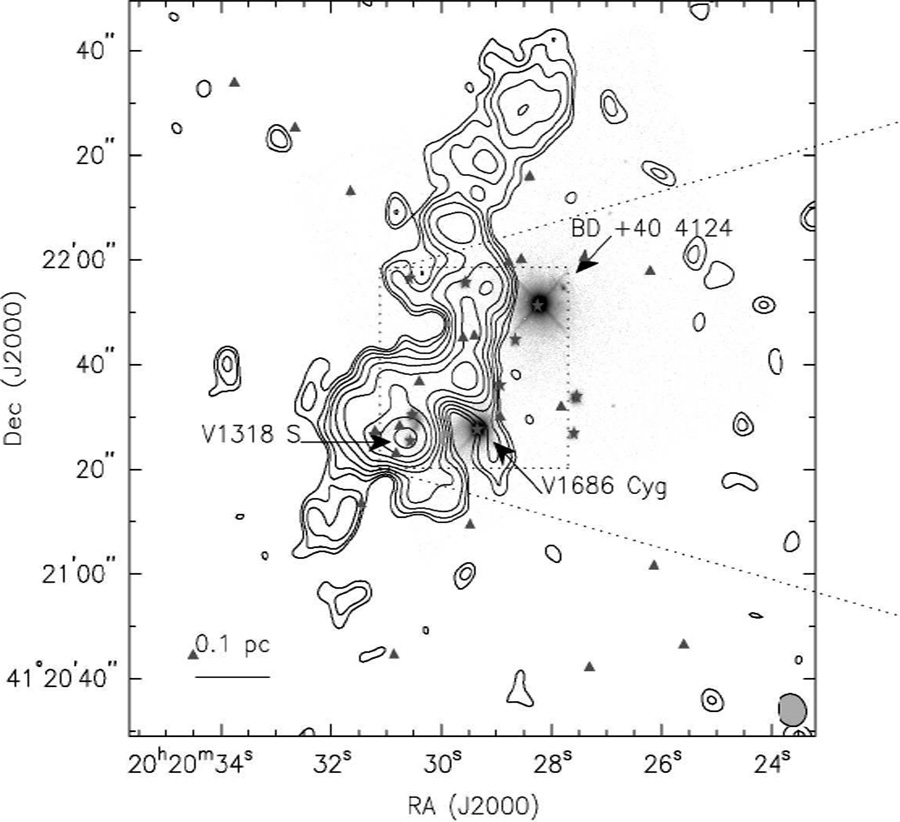
Our Sun is likely to have been born in a cluster environment, which should not be too surprising, as there is good evidence that the majority of stars in the Galaxy formed in clusters. Clusters are often associated with one or more massive stars accompanied by a large number of lower mass stars. In fact, the typical star forming system is actually a low stellar density cluster, including several young intermediate to high mass stars surrounded by ten to a few hundred low-mass protostars. The region of V1318 Cygni is a strong infrared source within a young cluster with such characteristics. BD + 40 4124 is the optically brightest member of the small group of young stars that includes V1686 Cyg and the pre-main sequence binary V1318 Cygni. BD+40 4124, is a Herbig Ae/Be (> 8 solar masses) star located in the direction of the Cygnus arm at a distance of about 3200 light years. This small, young group of stars is interesting in regards to investigating conditions in which a single high-mass star, capable of becoming a supernova (BD + 40 4124) forms, and impacts the evolution of its lower-mass siblings (V1686 Cyg and the binary V1318 Cyg). At high resolution V1318 Cygni resolves into three components, V1318-S (south), V1318-N (north), and V1318-M (middle). V1318 South and North are pre-mainsequence binaries separated by about 5000 A.U. (5 arcsec) while V1318-M is thought to represent a nebulous bridge or stream between V1318 N and S.

Information and chart courtesy:
The Remarkable pre-main sequence star V1318 Cygni: Aspin, Sandell, Weintraub AA, 282, L25-L28 (1994)
Colliding Clouds: The Star Formation Trigger
of the Stellar Cluster Around BD+40. 4124
Leslie W. Looney1, Shiya Wang1, Murad Hamidouche1, Pedro N. Safier2,3,
and Randolf Klein